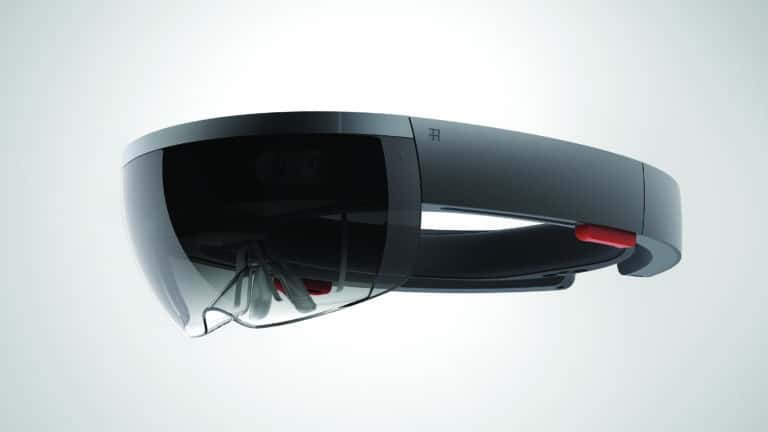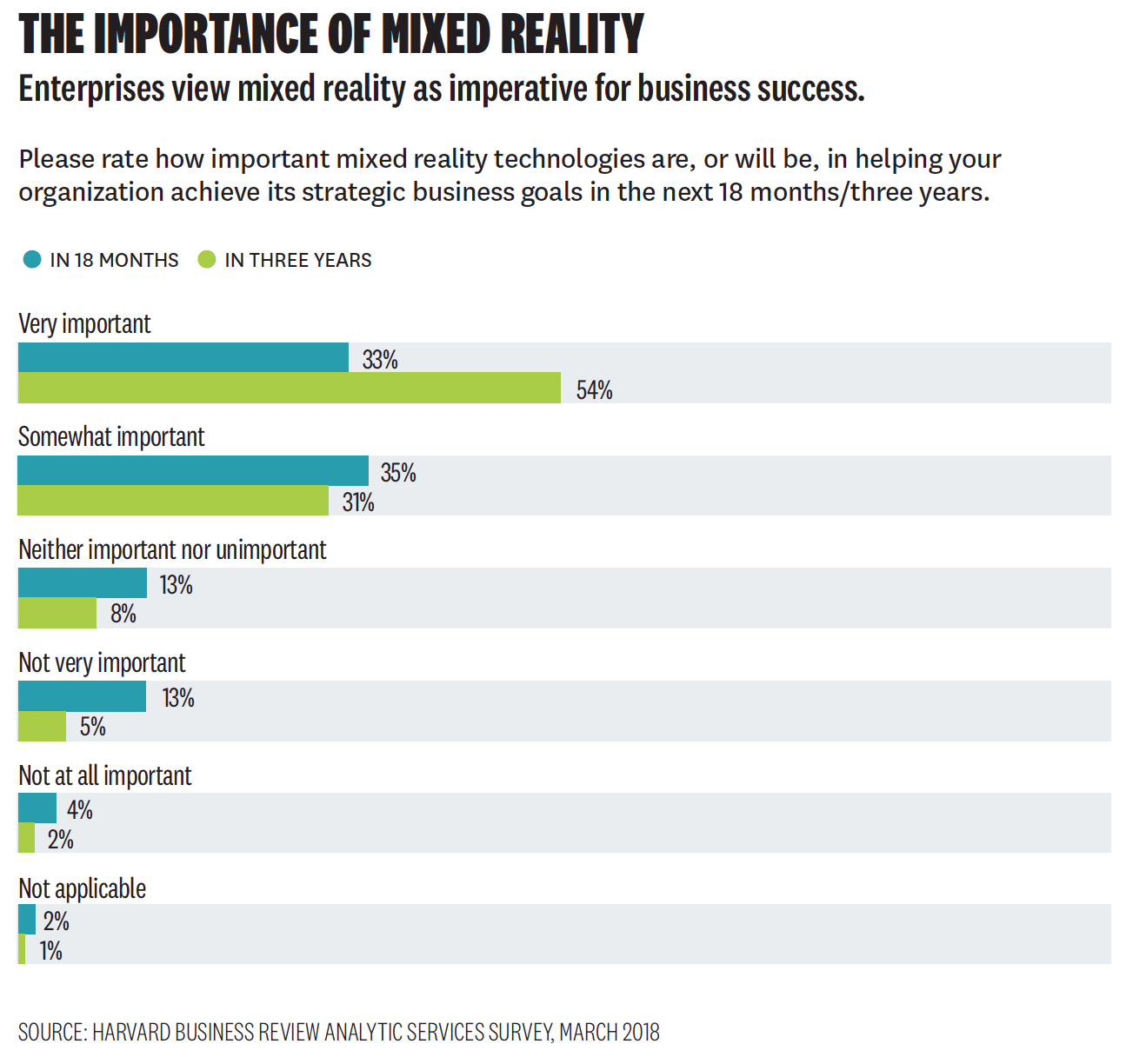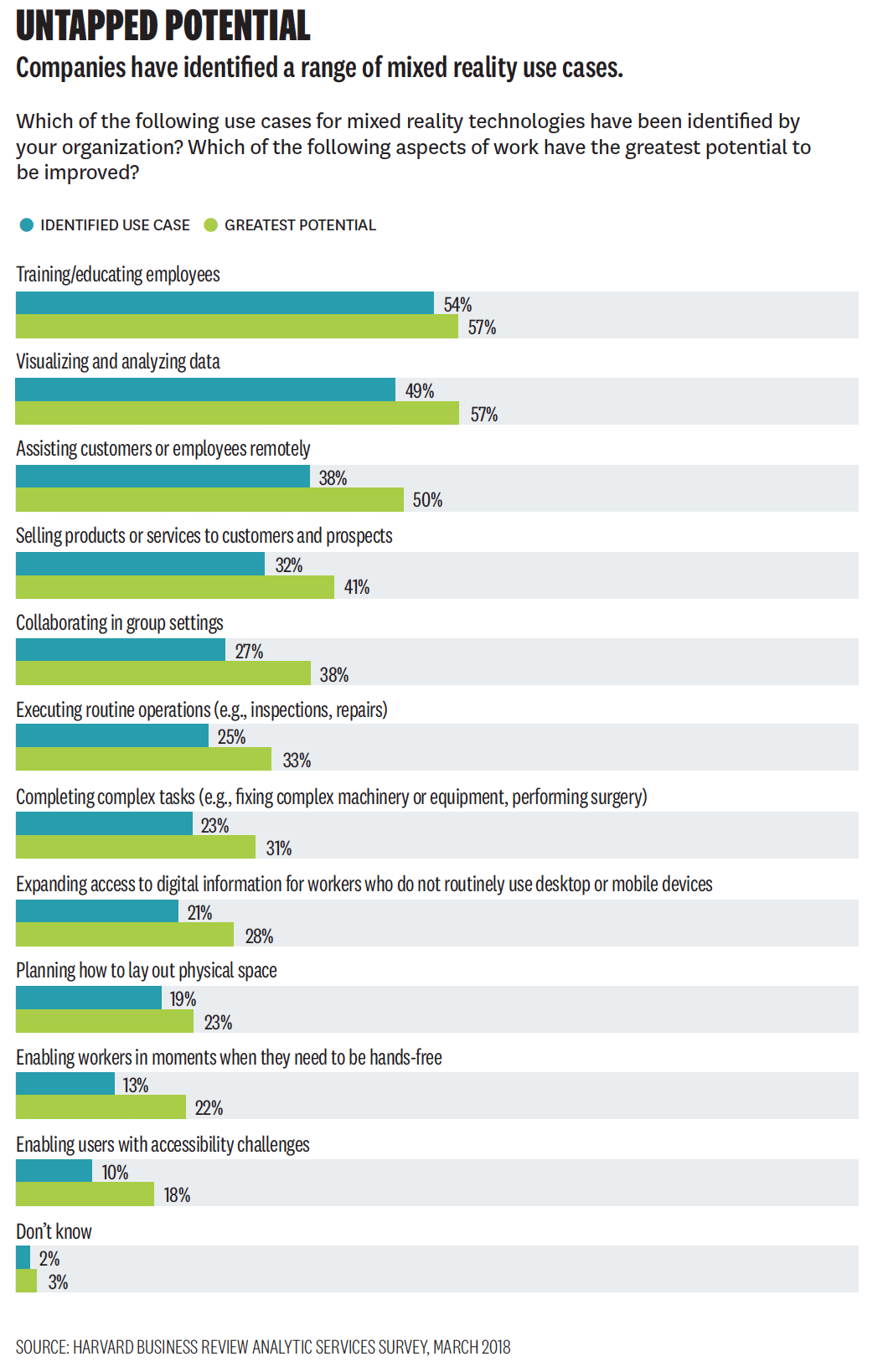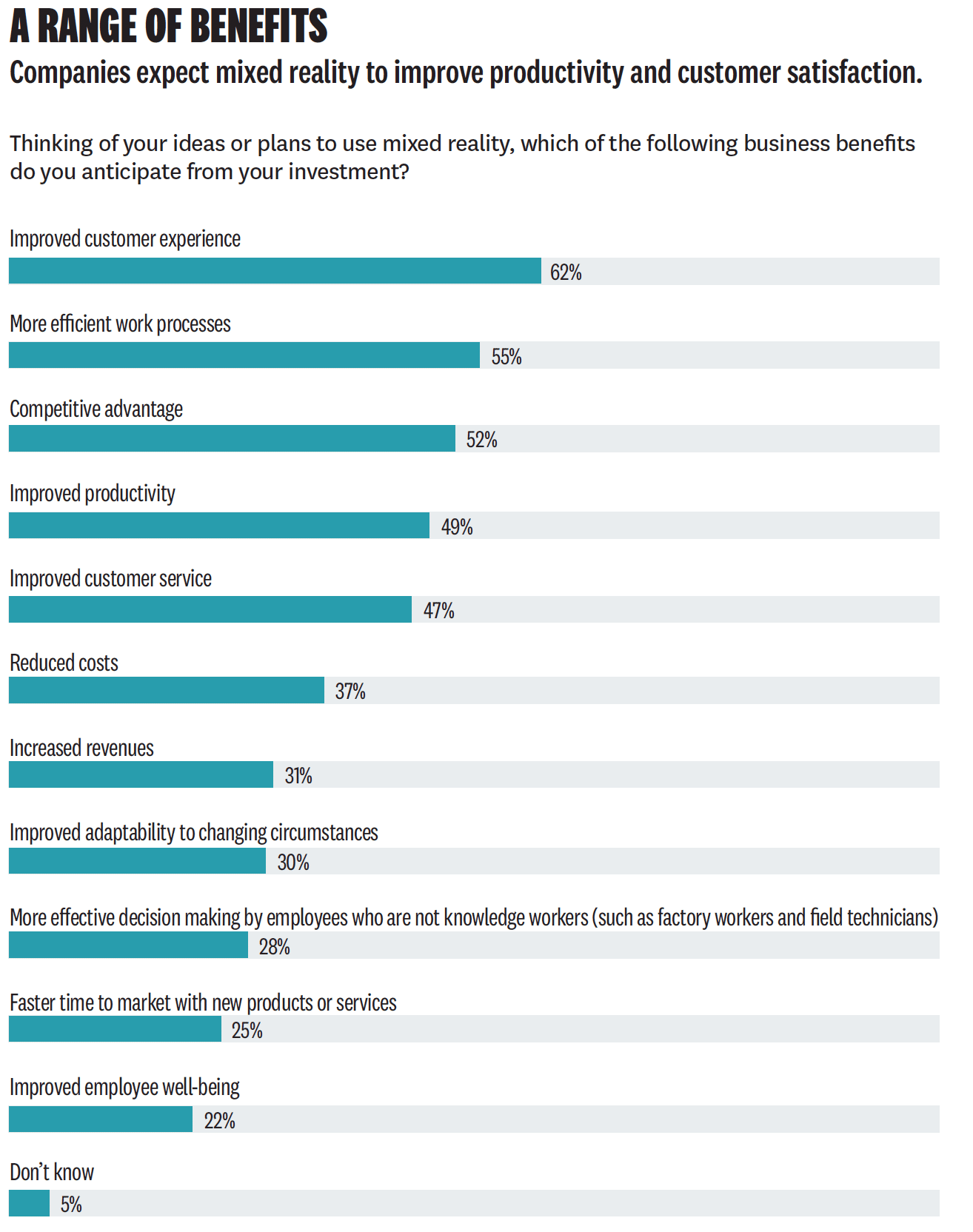
Data Point of the Week is ARtillry’s weekly dive into data from around the XR universe. Spanning usage and market-sizing data, it’s meant to draw insights for XR players, or would-be entrants. To see an indexed archive of data briefs and slide bank, subscribe to ARtillry Pro.
There’s lots of talk about XR’s potential to unlock enterprise productivity, cost savings and capability. And there are lots of market-sizing estimates (including ours) about how those opportunities will turn into real revenue and industry growth.
But before we get to that point, there’s a typical process of industry education, acclimation and getting past adoption humps. The latter stems from typical organizational inertia: The ROI case could be rock solid, but it still takes a while to get multiple stakeholders to jump at the same time.
So where are we now and what do current market signals tell us? According to a recent Microsoft- sponsored Harvard Business Review survey of 394 companies (methodology and breakdowns below), adoption levels are more advanced than you might think.
Specifically, 87 percent of respondents are exploring, piloting or deploying AR or VR (collectively “mixed reality” in the survey parlance, given Microsoft’s involvement). That includes 67 percent exploring or piloting use cases while 20 percent are in actual production or deployment.

In terms of future looking adoption and growth, 65 percent of respondents believe AR and/or VR will be somewhat (35 percent) or very (35 percent) important in the next 18 months. These are strong signals, though “aspirational” survey results should be used with caution.

Drilling down to specific use cases, the XR-assisted job functions most identified were corporate or customer facing, as opposed to the industrial productivity applications we’ve examined. This could have something to do with the sample (methodology and sample breakdown is below).
Specifically, employee training was identified with the greatest potential, followed by data visualization, customer assistance, product sales and collaboration. The report doesn’t segment “mixed reality,” (glossary below) but some of these applications seem more VR than AR.

In terms of high-level ROI goals, the results again tend to favor corporate or customer-facing functions. Improved customer experience scored highest, followed by rather ambiguous goals like “more efficient work process” and “competitive advantage.”

Despite some of the ambiguity and possible bias from survey sponsor Microsoft, these are strong demand signals if accurate. Moreover, a good portion of the survey sample was middle management and below — a key constituency for real deployment.
The way enterprise adoption usually plays out is through top-down deployment and bottom-up adoption. Then a tipping point comes, after which adoption accelerates. We saw a similar cycle with enterprise smartphone adoption, albeit driven more by bottom-up demand (think: BYOD).
For XR, we’re projecting that tipping point to come around 2020. But pinpointing the timing is a game of constantly monitoring the current pace of adoption and other industry signals. Surveys like this are helpful but only as one tile in a larger mosaic.
The report’s glossary and methodology are below for more context.


For deeper XR data and intelligence, join ARtillry PRO and subscribe to the free ARtillry Weekly newsletter.
Disclosure: ARtillry has no financial stake in the companies mentioned in this post, nor received payment for its production. Disclosure and ethics policy can be seen here.
Header image credit: Microsoft
